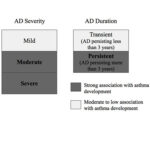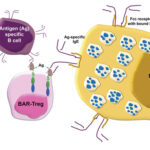Tag Archives:allergy
The allergies go marching on: the atopic march and the temporal relationship of allergic diseases
Antigen-expressing regulatory T cells can protect against allergic reactions
Interleukin-18: Critical molecule in promoting allergic diseases
Chronic rhinosinusitis patients with gastroesophageal reflux disease have a significantly higher prevalence of atopy and asthma
Vitamin D may contribute to development of asthma
药,过敏反应to antiepileptic drugs
Around 1% of the global human population – ca. 65 million – suffer from epilepsy – a chronic neurological disease with one of the most prominent symptoms being so called epileptic seizures. With a range of antiepileptic
The inflamed skin in atopic eczema contributes to the disrupted skin-barrier
Bad news for people with a penicillin allergy
There are over 500,000 hospitalizations annually in the U.S. in which patients will have a reported allergy against first line antibiotics. Beta-lactams are the largest group of antibiotics which include penicillins, cephalosporins, and carbapenems. These antibiotics are
Zinc supplementation and allergy
Allergic mechanisms of Eosinophilic oesophagitis
The concept of eosinophilic oesophagitis (EoE) as a food allergy seems foreign to many patients, and even physicians, since EoE does not exhibit the typical symptoms associated with allergic reactions such as hives, swelling, pruritus, wheezing or
Allergy: the latest technology in vitro in the service of an appropriate diagnosis
The countless and various allergen sources from both the plant kingdom is to the animal kingdom constantly stimulate our immune system.So the allergy diagnostics laboratory is evolving using new technologies such as molecular biology, nanotechnology to highlight












